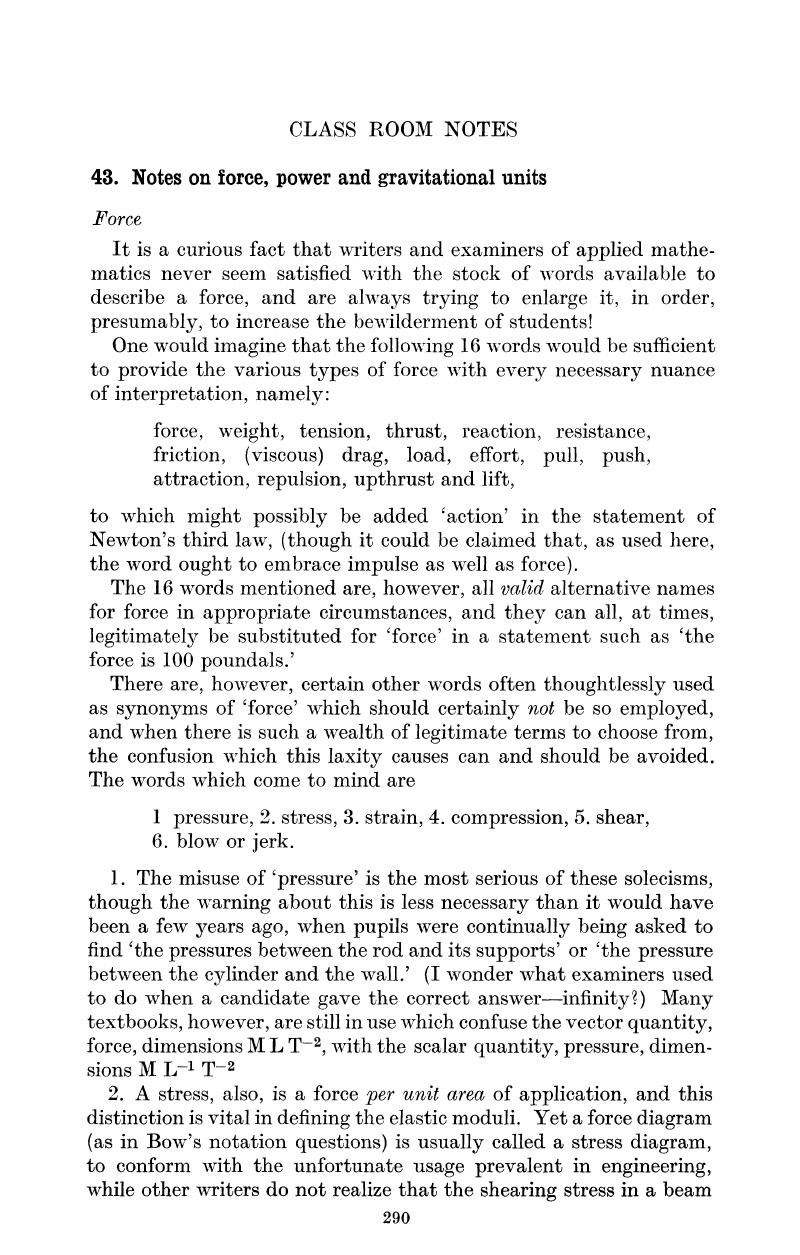No CrossRef data available.
Article contents
43. Notes on force, power and gravitational units
Published online by Cambridge University Press: 03 November 2016
Abstract

- Type
- Class Room Notes
- Information
- Copyright
- Copyright © Mathematical Association 1959
References
page 292 of note 1 Some heavy dray horses belonging to a brewery were made to raise loads of 100 lb.wt. from the bottom of a deep well, by pulling horizontally on a rope passing over a pulley Watt found that they could do this at about 2½ mph. For no very precise reason, he then increased the calculated result by 50% to compensate for the losses due to friction (presumably estimating this to 1 significant figure). Finally, with a quite unwarranted optimism as to the potential accuracy of this experiment, he left 2 significant figures in his answer!
page 293 of note 3 The ingenious convention of writing Lb. (with a capital L) for lb.wt. does not commend itself for use in schools. Another notation, however, has been proposed, which is worthy of more serious consideration. This employs lbm. and lbf. for pound mass and pound force respectively, and gm. and gf. for gram mass and gram force.
page 294 of note 3 Just as they must also be excused for thinking that there is really no difference between speed and velocity after they have read about those clever particles which manage to describe circles with constant velocity, v! In this case, however, they have probably already given up trying to distinguish between these particular concepts after hearing us repeatedly talk about ‘angular velocity,’ when, (had we wished to be helpful), we should have been saying ‘angular speed;’ for, in school mathematics, where the only rotations normally considered are confined to one plane, this quantity behaves like a scalar, and so its vectorial status is better concealed until it can be properly appreciated.


